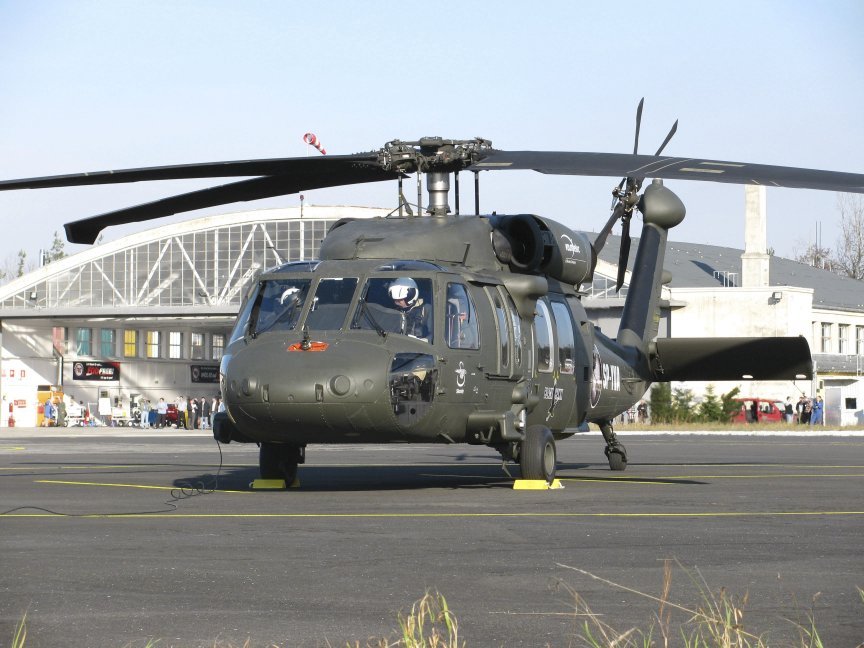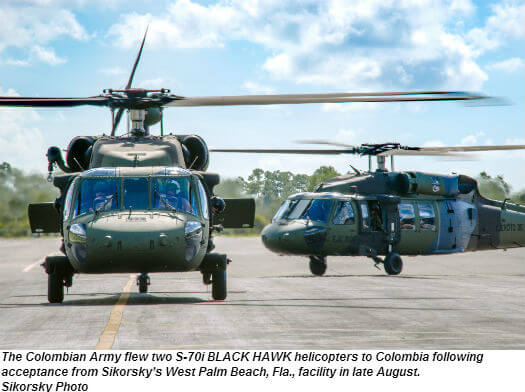Sikorsky S 70: Enhancing Helicopter Effectiveness and Versatility
Sikorsky S 70: Enhancing Helicopter Effectiveness and Versatility
Blog Article
Rotary-Wing Aircraft Offering Superior Toughness and Precision Design
In the world of aviation, rotary-wing aircraft have actually long been recognized for their special capacities in various functional atmospheres. From army goals to civilian applications, the advancement of rotary-wing innovation has actually led the way for devices that use unparalleled resilience and accuracy design. Via improvements in products and construction techniques, combined with advanced trip control systems, these airplanes have actually come to be indispensable tools for tasks that demand both toughness and accuracy. As we check out the complex equilibrium in between advancement and integrity in rotary-wing airplane, it comes to be apparent that the merging of sophisticated modern technology and tried and tested layout concepts has actually established a brand-new requirement for performance and effectiveness in the aerospace industry.
Evolution of Rotary-Wing Modern Technology
Throughout the background of aeronautics, the development of rotary-wing technology has actually been a testament to continuous innovation and innovation in aeronautical engineering. From the very early days of vertical flight with basic layouts to the advanced helicopters and other rotary-wing airplane of today, the progression in this field has actually been exceptional.
In the early 1900s, leaders like Igor Sikorsky and Juan de la Cierva made considerable strides in rotary-wing technology. Sikorsky's VS-300 helicopter, very first flown in 1939, marked a crucial moment in the growth of useful rotary-wing airplane. This success paved the means for further improvements in vertical flight abilities.

Today, rotary-wing aircraft play vital duties in numerous sectors, including military operations, emergency medical services, legislation enforcement, and industrial transportation. The development of rotary-wing innovation proceeds to press the limits of what is feasible in vertical flight, making sure that these aircraft stay vital possessions in the air travel sector.
Materials and Building Innovations
Showing a combination of innovative materials and accurate construction techniques, rotary-wing airplane have actually undergone significant developments in resilience and performance. Among the vital technologies in products used for rotary-wing airplane is the boosting use of composite materials. These materials, such as carbon fiber reinforced polymers, supply a high strength-to-weight proportion, improving both the structural honesty and general performance of the airplane. Furthermore, developments in manufacturing procedures have enabled even more complex and accurate building of rotary-wing components, adding to enhanced the rules of aerodynamics and effectiveness.
Additionally, the assimilation of advanced layers and surface therapies has actually played an important duty in improving the durability of rotary-wing aircraft. These layers offer defense against rust, abrasion, and severe weather, prolonging the life-span of the aircraft and decreasing upkeep requirements.
In terms of building technologies, additive manufacturing, likewise called 3D printing, has actually revolutionized the production of complicated parts for rotary-wing airplane. This technology enables fast prototyping and modification, bring about faster development cycles and minimized prices. On the whole, the continual evolution of materials and construction techniques is driving the capabilities and performance of rotary-wing aircraft to new heights.
Precision Flight Control Solution

The combination of GPS modern technology even more boosts the precision and dependability of these systems, enabling exact navigation, waypoint monitoring, and automated flight control. sikorsky s 70. This degree of precision not just improves the safety and security of rotary-wing operations but likewise improves general operational effectiveness and mission efficiency
Moreover, the constant developments in expert system and artificial intelligence have assisted in the growth of self-governing trip capabilities within Precision Trip Control Systems. This allows rotary-wing airplane to carry out complicated goals with unparalleled precision and consistency, making them crucial assets this hyperlink in a wide variety of applications, including armed forces procedures, search and rescue missions, and airborne photography.
Resilience in Testing Atmospheres
Sought after functional setups, rotary-wing airplane demonstrate extraordinary strength and robustness, guaranteeing ideal efficiency under tough ecological problems. These airplanes are created to withstand a large range of environmental aspects, consisting of severe temperature levels, high winds, and harsh surface, making them fit for numerous goals in varied landscapes.
One vital factor contributing to the sturdiness of rotary-wing airplane is their tough building. These aircraft are developed utilizing premium materials and advanced engineering techniques to enhance their structural honesty and integrity. In addition, parts such as rotor blades, engine systems, and touchdown equipment are carefully developed to endure the strains and stresses run into throughout operations in challenging environments.
In addition, rotary-wing airplane are geared up with sophisticated onboard systems that monitor efficiency metrics in real-time, permitting for positive maintenance and very early detection of potential issues - visite site sikorsky s 70. This positive technique aids stop unexpected failures and ensures the continued airworthiness of the airplane popular functional settings. Overall, the resilience of rotary-wing aircraft in tough settings is a testimony to their premium design and layout, making them vital properties for different mission-critical procedures
Maintenance and Integrity Criteria
The adherence to rigorous upkeep and dependability requirements is critical in making sure the ideal performance and security of rotary-wing aircraft. Normal upkeep checks, performed by qualified technicians, are important to identify and attend to any type of prospective issues prior to they endanger the aircraft's functionality. These checks incorporate a thorough exam of all important elements, including the engine, rotor system, avionics, and hydraulic systems, to assure that from this source they remain in prime functioning problem.
Additionally, adherence to set up maintenance intervals in accordance with maker standards is essential for upholding the aircraft's reliability. This aggressive technique helps protect against unexpected malfunctions and ensures that the aircraft continues to be airworthy for its intended objectives. In addition, the implementation of durable integrity criteria, such as routine element testing and replacement based on established lifecycles, further improves the aircraft's stability.
Verdict

In conclusion, the innovations in rotary-wing aircraft technology have led to premium sturdiness and accuracy design. With cutting-edge materials and construction methods, along with accuracy flight control systems, these aircraft can operate in difficult environments with enhanced dependability. The upkeep and dependability requirements guarantee that these rotary-wing aircraft remain to perform at their finest, making them vital possessions for numerous sectors.
Showing a blend of innovative materials and exact construction strategies, rotary-wing airplane have undertaken considerable improvements in toughness and performance. One of the key technologies in products made use of for rotary-wing aircraft is the boosting utilization of composite materials.With thorough interest to information and advanced technical integration, rotary-wing airplane have actually embraced Precision Trip Control Equipment as a cornerstone of their functional excellence. In general, the longevity of rotary-wing aircraft in difficult atmospheres is a testament to their remarkable design and design, making them important properties for various mission-critical operations.
In conclusion, the improvements in rotary-wing aircraft modern technology have led to superior durability and accuracy engineering.
Report this page